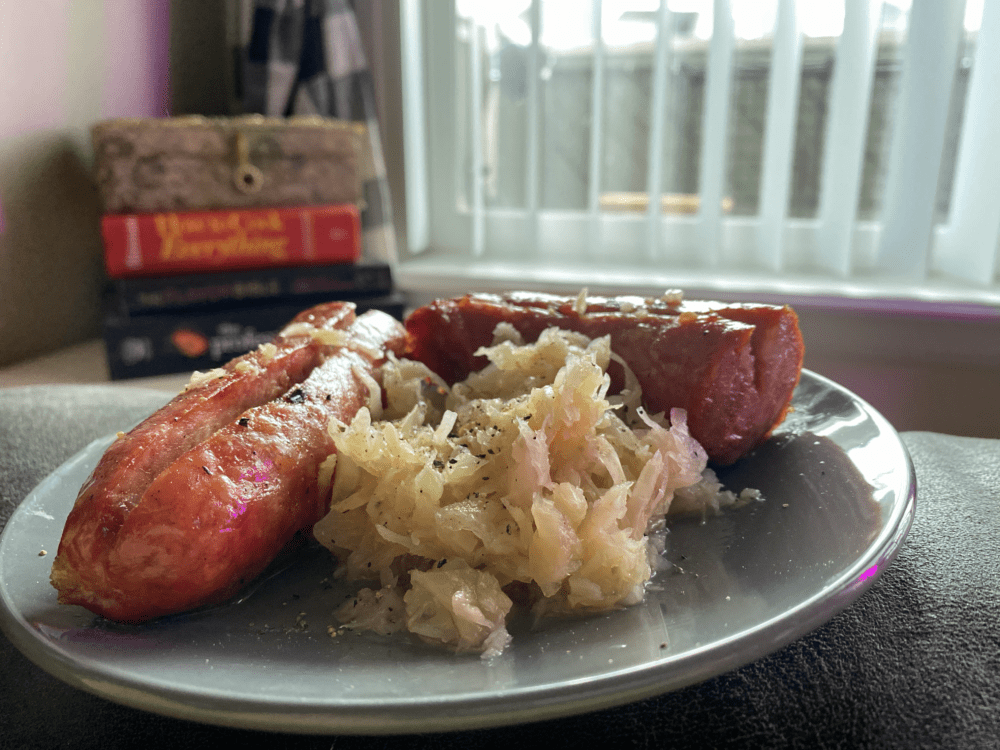Sauerkraut
It is a stinky job but it sure is good. -Troy
Ingredients
- 25 lbs cabbage
- 1/2 lb pickling salt about 3/4 cup
Instructions
-
Remove outer leaves and any undesirable portions from firm, mature, heads of cabbage; wash and drain. Cut into halves or quarters; remove the core. Use a shredder or sharp knife to cut the cabbage into thin shreds about the thickness of a dime. In a large container, thoroughly mix 2 Tbsps salt with 3 lbs shredded cabbage. Let the salted cabbage stand for several minutes to wilt slightly; this allows packing without excessive breaking or bruising of the shreds. Pack the salted cabbage firmly and evenly into a large clean crock or jar. Using a wooden spoon or tamper or the hands, press down firmly until the juice comes to the surface. Repeat the shredding, salting and packing of the cabbage until the crock is filled to within 3 to 4 inches of the top. Cover the cabbage with a clean, thin, white cloth (such as muslin) and tuck the edges down against the inside of the container. Cover with a plate or round waxed board that just fits inside the container so that the cabbage is not exposed to the air. Put a weight on top of the cover so the brine comes to the cover but not over it. A glass jar filled with water makes a good weight. An alternative method of covering cabbage during fermentation consists of placing a plastic bag filled with water on top of the fermenting cabbage. The water-filled bag seals the surface from exposure to air and prevents the growth of film yeast or molds. It also serves as a weight. For extra protection the bag with the water in it can be placed inside another plastic bag. Any bag used should be of heavyweight, watertight plastic and intended for use with foods. The amount of water in the plastic bag can be adjusted to give just enough pressure to keep the fermenting cabbage covered with brine. Formation of gas bubbles indicates fermentation is taking place. A room temperature of 68 to 72 degrees is best for fermenting cabbage. Fermentation is usually completed in 5 to 6 weeks. Fully fermented sauerkraut may be kept tightly covered in the refrigerator for a few months, it can be frozen in sealed freezer bags, or it may be canned as follows: Hot Pack: Bring sauerkraut and liquid slowly to a boil in a large kettle, stirring frequently. Remove from heat and fill jars rather firmly with sauerkraut and juices, leaving 1/2-inch head space. Raw Pack: Pack jars with sauerkraut and cover with juices, leaving 1/2-inch head space. Adjust jar lids and process. Hot Pack: Pint jars...........10 minutes. Quart jars........15 minutes. Raw Pack: Pint jars.........20 minutes Quart jars.......25 minutes


